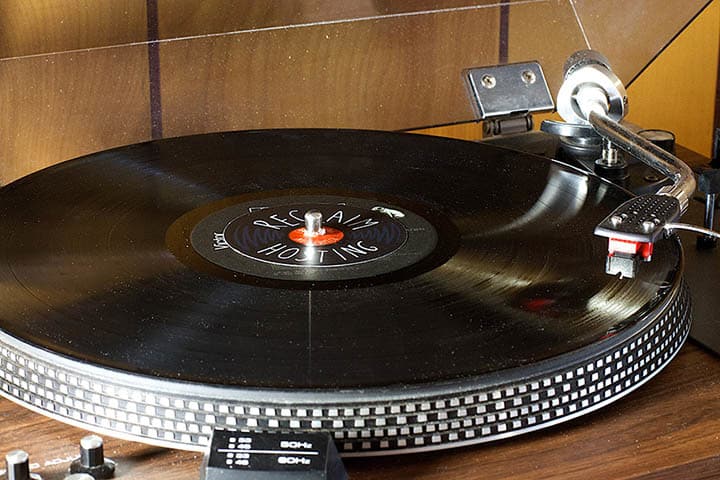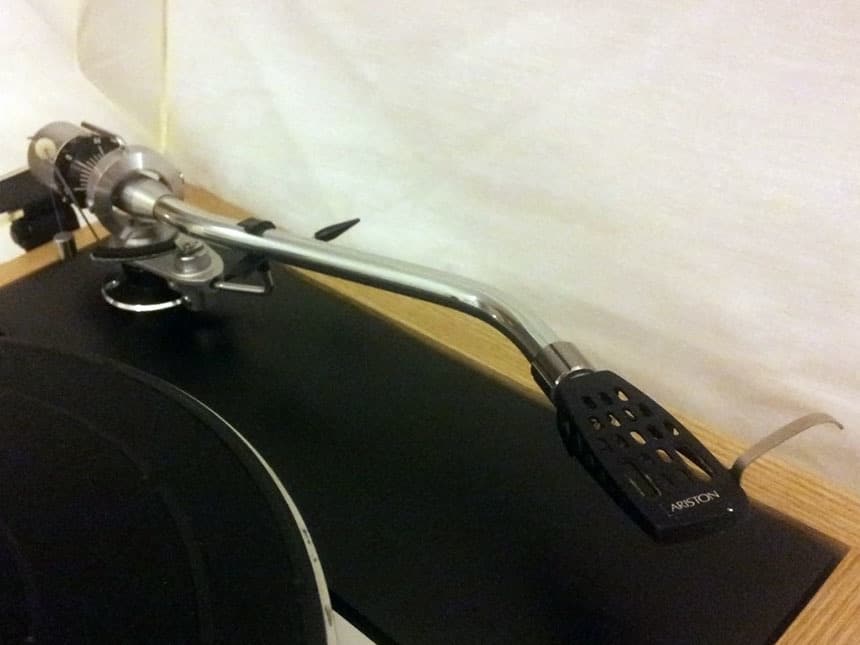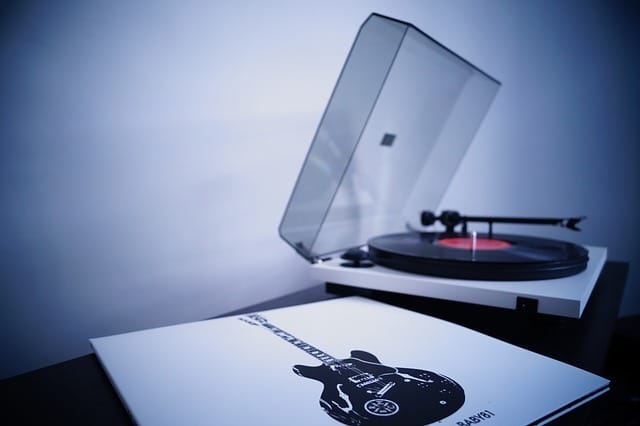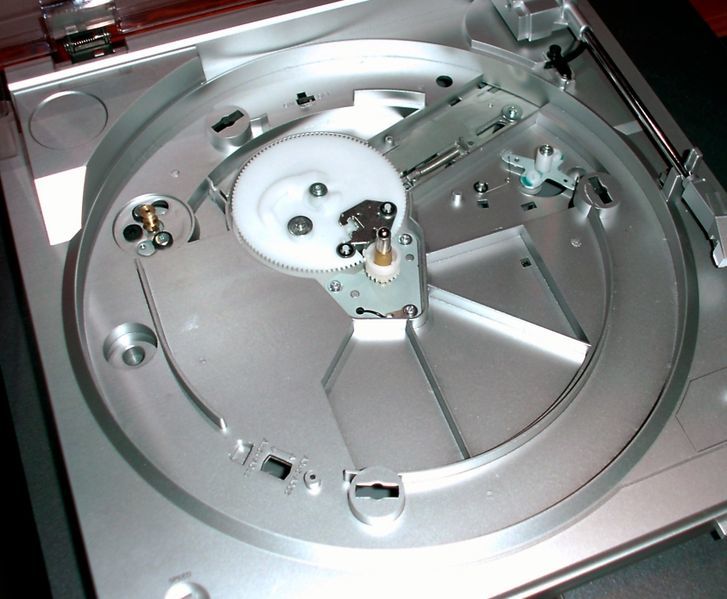When it comes to the drive turntable, most people always wonder “what are the differences between a direct drive and belt drive?”
Although this is an old question, you still confuse these models. Is it right? Well, in this case, you need to spend a little time to identify each design.
This is the major reason we are here to help you in this mission and then, you can identify the difference between direct drive vs belt drive turntable. Let’s begin!
About Belt – Drive Turntables
For regular listening or transferring your turntable to digital files, a simple belt-driven model may satisfy. A belt-driven turntable has the record platter which turns the record is driven by a belt made from rubber or synthetic.
With the platter, it places on a center spindle supported by a bearing. The belt also has a pulley attached to a drive motor and the drive motor is separate from the platter.
It is often isolated from sharing the similar mounting surface because it prevents vibration in the motor from being adjusted to the rest of the turntable.

A vibration of any type can paint the sound and create tracking problems if it catches the stylus promptly.
Because of the simple design of a belt-driven turntable, a humbly priced design can offer good sonic performance. At some points, the drive belt will need to replacement due to wear. Typically, belts are affordable and easily replaced by users.
Benefits
- The elastic belt soaks up shock and prevents vibrations that are produced by the motor from catching the platter.
- Separating the motor from the platter and reduce the noise transmission to the tone-arm.
- The belt-drive turntables create greater sound than the direct drive turntables because the minimize noise from the motor.
Drawback
- Most belt-drive turntables have much lower torque and they do not have much accurate playback speed.
- The belt probably wears down a few years and it requires to be replaced on a regular basis.
About Direct – Drive Turntables
A direct-drive turntable has the record platter which is attached to the drive motor directly. The center spindle is a component of the motor. All these designs do not require a belt, but they need to have main applications.
With DJs and other broadcast applications, the direct-drive turntables offer high-torque and speeds capability needed for quick starts to bring the next song in the queue online when necessary.
Also, an electronic brake is usually incorporated to carry the platter to a fast stop, supporting preserve the right location on the record from which you desire to begin your next song. A suitable pitch control could be given to varying the speed.
This could be used to assist fit program material into an allotted time slot and matching the beat for artistic expression when taking two turntables and transitioning from a song to the next one or for supporting the discerning details while listening to educational material.

As a direct-drive model has fewer moving parts and it does not have a belt, it is much more durable and it does not have any wear part in the drive to replace.
To reduce the amount of motor vibration which reaches the stylus, a great motor design and high-quality dampening of important elements like the platter and tone-arm are required.
This will add attention to detail ought to transfer to higher cost for the direct-drive design compared to all simpler belt-driven turntables.
Benefits
- Direct-drive turntables have higher torque and provide highly stable speeds. Higher torque means that the platter is less vulnerable to outside environments like the stylus and your hand.
- With a higher torque, the platter boosts to a steady speed faster which causes a less sound distortion.
- A direct-drive turntable helps you to spin the platter backward to make special sound effects which are preferred by DJ’s.
Drawback
- The only downside of a direct-drive turntable is that the rotation of the motor produces unwanted vibrations which enable to affect sound quality. This problem ought to be addressed with the usage of shock absorbers from the platter to the motor.
Direct Drive vs Belt Drive Turntable: What Are The Differences?
For those who are interested in the workings of a turntable can work this one out simply from their names. Because descriptors go, they are decent musical instruments.
Direct-drive turntables have the motor located under the platter and rotate it directly while belt-drive tables have the motor offset and covered around the spindle. This is a thin belt and it always made from rubber which hugs the major platter and rotates it as a pulley.
So now, you can identify the differences between a direct drive and a belt drive turntable without much hassle. Is it right?!
If not, you totally discover each turntable and you are clear as easy as a piece of cake. We have listed out each part of the below categories.
These days, direct-drive DJ turntables like the Denon DJ Prime VL12 take a premium on user or DJ interaction in the live performance rather than on ultra-refined music reproduction in a quiet living room as the audiophile turntables from 40 years ago.
Because music listener did not want the turntable to display any speed variance in the past, professional DJs use their turntables as a live performance instrument.

You can change the intentional speed variations and adjustable torque for quick musical start-up and exact scratching effects.
A rugged tone-arm system can stand up to the rigors of heavy-duty usage under party conditions.
These are all requirements of the professional DJ turntable.
Today, these turntables fall into three main broad usage types. The casual music listener, the important audiophile music listener and the DJ as well.
Turntables aimed for each of these user groups are different with a specific emphasis on the performance, endurance, convenience characteristics which are most crucial to their main market.
Club DJ turntables are all direct-drive turntables while music turntables are direct or belt-drive. The idler wheel is done but you should have a deep understanding of how and the reason why we got to where we are here.
Belt drives are better for isolating vibration, but this should not be an issue in the huge bulk of listening conditions.
So now, you can identify the differences between a direct drive and a belt drive turntable without much hassle. Is it right?!
Parts of the Turntables
Any turntable contains three main parts such as the platter (the object the record places on), a tone-arm (the one with the needle), and a motor to spin the platter.
Furthermore, there are two kinds of drive systems that have sources of bitter debate among audiophiles, belt-drive, and direct drive.
The Platter

This part has three core functions such as it keeps the record, isolates the tone-arm from vibration, and it serves as a speed governor.
It is typically has a flywheel. Excellent quality tables have heavy platters.
Although decent quality table will have a platter made from cast aluminum material because this is not expensive, easy to putt and good-looking construction to boot. Nonetheless, you should evade plastic platters.
The Tonearm

This part is the most complicated and it is also easy to misunderstand on the part of the turntable. Designers try to keep the tonearm’s mass as low as possible to evade unnecessary wear on the grooves of the turntable.
The Motor
There are two main kinds of motors you will find the greatest one which are belt-drive turntables, AC (alternating current), and DC (direct current). An AC motor is larger and heavier.
It runs on the electricity provided by a wall socket without getting voltage regulation or transformers. These categories of motors are well-made and they could make to run no matter how old they are.
The other type of motor like the DC is becoming popular in home electronics because they are small and inexpensive. Nonetheless, the DC motors are not stronger and they are easy to fail.
If you have an option, you could look for a turntable with the stronger AC motor. Direct-drive turntables are another problem absolutely. Direct-drive turntables use magnetic induction like a bullet train and they are reputable.
The Reason Why a Company Prefer Using a Direct-Drive Turntable Or a Belt-Drive Model
If a turntable runs without caveat, it will not need for the others. However, each is compromised as much as it has strengths. In this case, it is about a manufacturer deciding which method is easier to undertake while taking the most inherent talents.
With direct-drive turntables, they are linked to their higher torque greatly. In other words, it has a quicker start-up speed and less vulnerability to irrelevant force like the weight of the stylus.
As it catches the right speed, so it is rapidly the domain of DJs. It also allows them to stop and rewind the vinyl manually because users can align the beats coming from two decks.
Nonetheless, the platter is attached to the motor; vibrations are fed between the platters to the former directly. There is a degree of distortion placed on the final performance.
In general, manufacturer isolates the motor in a belt-drive configuration sidesteps which happen somewhat.

Most vibrations are damped by the presence of the rubber belt. They also reduce the motor interference in a belt-drive turntable to feed into all aspects of the eventual sound. The cartridge is often able to track the information etched into the groove of your record as well.
The belt could be placed in the necessity of providing it to move around the platter freely. In theory, the rotation speed is not as accurate as it does because of the potential slipping and reaches out.
More importantly, the machining of the core bearing will have differing bad effects for each drive-belt turntable setup.
For direct-drive turntables, the spindle can be all at sea, taking the record into a moving aim for your stylus and leading to less accurate tracking. At the same time, the force of a belt ought to pull the major bearing to a side and create more noise.
It is popular for excellent belt-drive decks to have several motors, so it can balance the pull on the platter and improve the drive at once.
Replace or upgrade a new belt

Belt could be last for a long time, but they will need to replace on a regular basis if they become loose, cracked or stretched to leave them uneven in main areas. Most users would not expect that to happen to a new belt for a few years.
Some producers make belt upgrades. When these can be made from different materials for better relaxation or longer life.
In other words, it is as the updated is in how much care has been taken in the belt’s manufacture. It ensures there are not any irregularity in form or at least fewer.
The quality sound of changing a direct-drive turntable or a belt-drive model
The sound is king and if you are pleased with the performance of a deck, how it has driven ought not to be the main point when testing one out.
Description of the standard and direct-drive motors
In a basic electric motor configuration, permanent magnets are kept in a fixed position in a wire coil on a main spindle which is easy to rotate. The rotating spindle increases outside the attaching magnets and is suitable to do the work of turning an enclosed tool.
In a turntable, this could be a rubber pulley belt connected to the platter. Stopping this with your hand probably lead to the belt slipping, breaking or detaching.
In a direct-drive motor, this relationship is set aside. Th coil is kept stationary, fixed to the body of the player. The magnets are enclosed to the underside of the platter itself. The spindle of the platter is the exact spindle of the motor.
As the two turntables are not connected physically, stopping the platter with your hand causes no troubles.
There is the circumstance it could overheat if held long enough time. However, direct-drive turntables assumed totally; especially those need to use for DJ because they are designed with sufficient cooling as to get this uncertain.
This article is not mean a comprehensive guide. We just share our experiences to help you distinguish between direct drive vs belt drive turntables before jumping off your certain point. After that, you ought to determine the differences for the upcoming time.
Conclusion
In a nutshell, your preferences matter. If you desire to have top-notch sound, regular playback, and a classic model, take into account picking up a belt-drive turntable.
If you wish to take a turntable that has much more valuable, then you should choose the direct-drive turntable. This is a smart choice for long-term play options and you can use it without much hassle.
Nonetheless, direct drive and belt-drive turntables are tremendous for getting benefits. A lot of modern turntables are belt-driven turntables because of the high degree of quality.
However, direct-drive turntables probably make sales thanks to their long-lasting potential and ease of use.
A record player’s drive quality is also incredible. When one drive turntable could sound better to some, the others will please another.
It is not a bad idea to test out a record player before taking an option. You should also decide your priorities.
In general, a belt-driven turntable gives a much-sought-after sound quality. If you need to have a final decision by playback only, then you could go with the belt-driven selection.
Do not forget to check your options completely, but be sure to estimate your budget, long-term needs, and living case supports in your own choice.
Your quality sound matters and so does your budget as well.
This article is not mean a comprehensive guide. We just share our experiences to help you distinguish between direct drive vs belt drive turntables before jumping off your certain point. After that, you ought to determine the differences for the upcoming time.